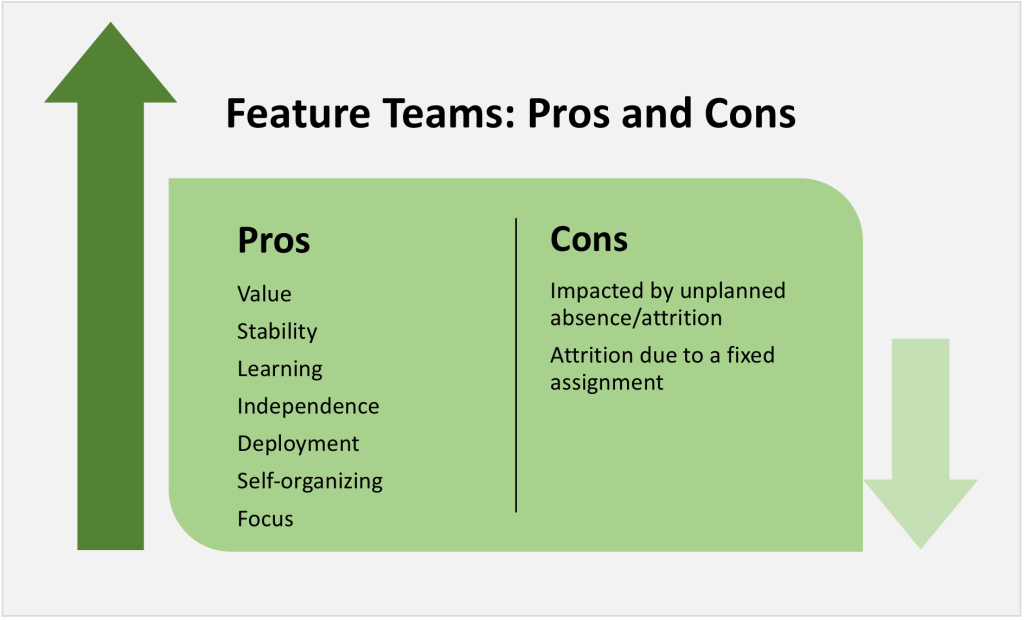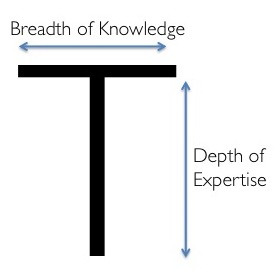The 3 W’s Of Building Your Agile Team: What, Who, And When
Building an Agile team is more than just posting job ads and signing contracts. Before you make an addition to the team, make sure you have the right infrastructure in place by knowing the what, who, and when of growing an Agile team.
What: Specialist Teams And Feature Teams
A feature team has various skills needed to complete and ship a product increment. One feature team can include multiple roles, including design, development, QA, and others. On the other hand, a specialist – or component – team is homogeneous in function–everyone has the same job. One component team unit can consist of all developers or all designers.
You can think of a feature team as a Crayola™ box of various colors whereas a specialist team is a grouping of the same color.
Pros And Cons Of Specialist And Feature Teams
It’s not a secret which setup we advise our clients to follow. Last month, David Hawks explained how not having feature teams can jeopardize an Agile transformation. However, let’s explore the two options a little deeper.
Specialist Teams
 There’s a lot to be said for a group of experts. With their combined and highly specific knowledge, they have the ability to solve many issues that arise in their field. Specialist teams are also able to absorb problems caused by employee attrition or unexpected absences.
There’s a lot to be said for a group of experts. With their combined and highly specific knowledge, they have the ability to solve many issues that arise in their field. Specialist teams are also able to absorb problems caused by employee attrition or unexpected absences.
However, silos created by a specialist team setup causes a lot of issues stemming from lack of communication between teams. Those issues, which can directly impact quality, include limited product perspective and a slower feedback loop. In addition, specialist teams are risky. If one team falls behind, the entire project slows down since each team is dependent on each other.
Feature Teams
 Due to the cross-functional nature of feature teams, there’s a lot of collaboration, communication, and learning that happens between team members. This creates greater organizational flexibility. Over time, highly-functioning feature teams are able to commit to work that’s of a different domain from their current or past projects. In addition, feature teams are focused on completing features, end-to-end, that bring value to a customer, while component teams focus on production (lines of codes created).
Due to the cross-functional nature of feature teams, there’s a lot of collaboration, communication, and learning that happens between team members. This creates greater organizational flexibility. Over time, highly-functioning feature teams are able to commit to work that’s of a different domain from their current or past projects. In addition, feature teams are focused on completing features, end-to-end, that bring value to a customer, while component teams focus on production (lines of codes created).
There are a couple of issues that arise from the feature team setup including risks associated with unplanned absences and attrition. If a feature team loses a test engineer, they are made vulnerable and progress can slow down. Since feature teams are built to last longer and commit to one project or product, attrition can inadvertently be caused if a team member does not like the work. This is a challenge especially since creativity and passion are big draws for tech workers. Dice.com surveyed 17,000 tech professionals and found that in order to retain developers, there needs to be a steady progression of more interesting and challenging assignments.
Who: Creating Your Teams With Ideal Knowledge Worker – The “T” in Team
Whether feature or specialist, the need for versatility also extends to the smallest unit of a team: the individual. When building your team, look for people who are T-shaped in their abilities, or generalizing specialists.
 You need people who are experts at the given role but have working knowledge of other aspects because it increases the flexibility of the team.
You need people who are experts at the given role but have working knowledge of other aspects because it increases the flexibility of the team.
When: The Right Time to Hire
If managers had all the money in the world, determining when to hire isn’t an issue. Sadly, that’s not the case. In the real world, leaders have to find the right balance between budget and the needs of their team. Analyze the following metrics to assess the situation appropriately:
1. Technical Debt
The amount of technical debt is a great indicator for staffing especially if you find that mature, high performing teams are struggling to get to done.
2. Long hours
Agile helps to minimize overtime by maximizing the amount of work that’s completed during a 40-hour work week, the alleged standard in the US. However, a 2013 Gallup poll showed that a vast majority of salaried, full-time Americans worked closer to a 47-hour work week. Whatever your company policy may be, long hours cause fatigue, sickness and unhappy employees.
3. Sick days used
Refer to number 2. Sick days can also be used for reasons outside of illness, like job interviews.
4. Employee happiness surveys
It’s normal for employee surveys to have an ebb and flow but consistently low scores on employee happiness surveys means it’s time for leaders to analyze company culture and processes.
- Amount of errors
One of the benefits of Agile is its ability to identify work quickly to mitigate risks. However, more errors on a consistent basis could mean the team is rushing to get things “done” because of a high workload.
- Customer Feedback
Unhappy customers are a result of poor work. If processes are as optimized as well as they can be, it may be time to add support.
For more on our approach to building strong teams and lasting business agility, you can check out our Transformation Services page.


Leave a Reply